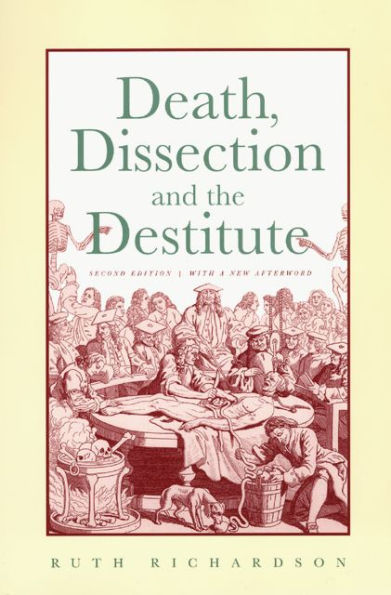Death, Dissection and the Destitute
In the early nineteenth century, body snatching was rife because the only corpses available for medical study were those of hanged murderers. With the Anatomy Act of 1832, however, the bodies of those who died destitute in workhouses were appropriated for dissection. At a time when such a procedure was regarded with fear and revulsion, the Anatomy Act effectively rendered dissection a punishment for poverty. Providing both historical and contemporary insights, Death, Dissection, and the Destitute opens rich new prospects in history and history of science. The new afterword draws important parallels between social and medical history and contemporary concerns regarding organs for transplant and human tissue for research.
1101613721
Death, Dissection and the Destitute
In the early nineteenth century, body snatching was rife because the only corpses available for medical study were those of hanged murderers. With the Anatomy Act of 1832, however, the bodies of those who died destitute in workhouses were appropriated for dissection. At a time when such a procedure was regarded with fear and revulsion, the Anatomy Act effectively rendered dissection a punishment for poverty. Providing both historical and contemporary insights, Death, Dissection, and the Destitute opens rich new prospects in history and history of science. The new afterword draws important parallels between social and medical history and contemporary concerns regarding organs for transplant and human tissue for research.
30.0
Out Of Stock
5
1

Death, Dissection and the Destitute
453
Death, Dissection and the Destitute
453
30.0
Out Of Stock

Product Details
| ISBN-13: | 9780226712406 |
|---|---|
| Publisher: | University of Chicago Press |
| Publication date: | 01/01/2001 |
| Edition description: | 1 |
| Pages: | 453 |
| Product dimensions: | 6.00(w) x 9.00(h) x 1.10(d) |
About the Author
From the B&N Reads Blog
